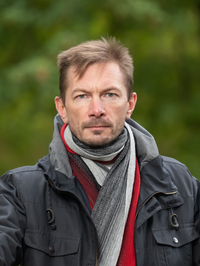GCSC KNL | Prof. Timo Maran (University of Tartu): "Ecosemiotics of the Anthropocene: How to Reground Culture in Ecosystems?"
Part of GCSC (Graduate Centre for the Study of Culture) Keynote Lecture Series
- https://www.uni-giessen.de/en/faculties/ggkgcsc/events/semesteroverview/previous/archive/wise2022_23/keynote-lectures/KNL_Maran
- GCSC KNL | Prof. Timo Maran (University of Tartu): "Ecosemiotics of the Anthropocene: How to Reground Culture in Ecosystems?"
- 2022-10-25T06:00:00+02:00
- 2022-10-25T08:00:00+02:00
- Part of GCSC (Graduate Centre for the Study of Culture) Keynote Lecture Series
Oct 25, 2022 from 06:00 to 08:00 (Europe/Berlin / UTC200)
From a semiotic perspective, Anthropocene manifests as a massive multiplication and spread of abstract symbols that lack referential connections with biological and material processes. Such growth of symbols is anti-ecological because of the large amounts of matter and energy required to produce and upkeep various media and artifacts that embody signs. As symbols are signs based on human conventions, they cannot relate directly to changes in environmental and ecological processes (described as dissent by David Low 2009). It is the degradation of the object in the sign that is characteristic of the Anthropocene semiosis.
In the biological realm, organisms rely on the presence of objects (such as environmental constraints, ecosystem properties, and resources). Anthropologists Eduardo Kohn (2013) and Andrew Whitehouse (2015) have proposed the concept of semiotic ground to denote the semiotic basis of the ecosystem. The semiotic ground can be described as a tissue consisting of iconic and indexical signs that retain connection between object and interpretation and, accordingly, between material and semiotic realms. The semiotic ground is a semiotic system shared by human and non-human species alike.
We should find ways to reground human culture, that is, reestablish the connection between the human symbolic sphere and ecosystems. Juri Lotman’s concept of semiosphere (the entirety of culture) could be reinterpreted here as the ecosemiosphere. This would be a semiotic sphere comprising all species and their umwelts, alongside the diverse semiotic relations (including humans with their culture) that they have in the given ecosystem, and also the material supporting structures that enable the ecosemiosphere to thrive (Maran 2020; 2021). Means for moving towards more ecological culture are revising the existing cultural models of nature, emphasizing the role of iconic and indexical semiosis, and fostering connectivity and dialogue between semiotic processes of different complexity.

// Prof. Dr. Timo Maran is Professor of Ecosemiotics and Environmental Humanities at the Department of Semiotics, University of Tartu, Estonia. Maran's research interests are theory and applications of ecosemiotics; ecocriticism and Estonian nature writing; and semiotics of biological mimicry. His publications include “Mimicry and Meaning: Semiotics of Biological Mimicry” (2017) and “Ecosemiotics. The Study of Signs in Changing Ecologies” (2020). Maran has also authored several poetry collections.
